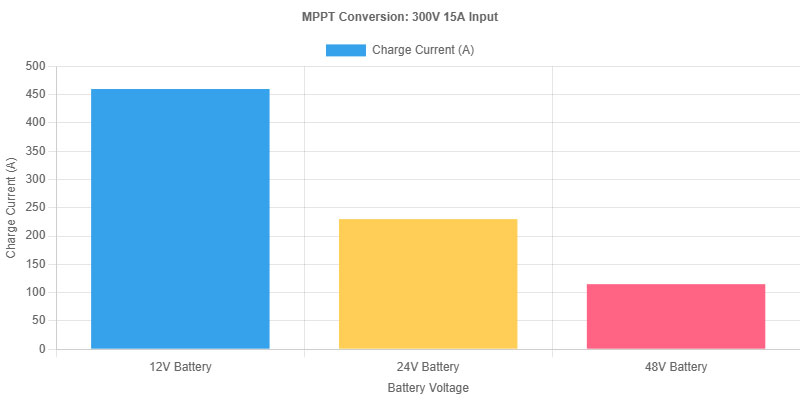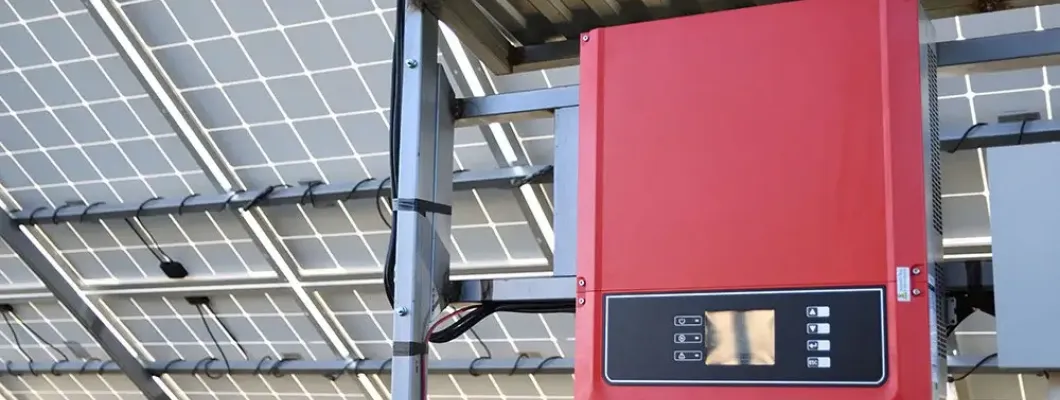Introduction
“Why does my hybrid inverter list two different current ratings?” This question puzzles many DIY solar enthusiasts building off-grid or hybrid systems. Hybrid inverters are the backbone of modern solar setups, integrating solar charge controllers, inverters, and battery management. Yet, parameters like maximum solar input current and maximum solar charge current often cause confusion. Understanding their differences is key to selecting the right solar panels and batteries, preventing system failures, and boosting efficiency.
This article provides a deep dive into these parameters, with technical insights, practical examples, and actionable tips to optimize your solar system. Whether you’re new to solar or an experienced off-grid designer, you’ll find solutions to common challenges. Have you faced issues with inverter current settings? Share your experience in the comments!
Understanding Hybrid Inverters
What is a Hybrid Inverter?
A hybrid inverter is a versatile device that manages solar panel input, battery charging, and power supply to loads, supporting both off-grid and grid-tied modes. Unlike traditional off-grid inverters (battery-only) or grid-tied inverters (grid-dependent), hybrid inverters offer flexibility for homes, RVs, or small businesses. They typically support 12V, 24V, or 48V battery systems with varying charge currents, making them ideal for diverse applications.
Key Parameters Overview
Key parameters include:
- Maximum Solar Input Current: The maximum current the inverter accepts from solar panels.
- Maximum Solar Charge Current: The maximum current delivered to the battery.
- Maximum PV Input Voltage: The upper limit of the solar panel’s open-circuit voltage (Voc).
Maximum Solar Input Current vs. Charge Current: Technical Breakdown
Definitions and Differences
Maximum Solar Input Current: This is the maximum current the inverter’s solar charge controller can handle from solar panels, tied to the panels’ maximum power point current (Imp) or short-circuit current (Isc). For instance, an inverter with an 18A input current limit requires the solar array’s total Imp to stay below this threshold to avoid overloading.
Maximum Solar Charge Current: This is the maximum current the inverter’s MPPT controller delivers to the battery. For example, a hybrid inverter may support an 80A charge current, charging a battery at up to 80A based on its voltage.
How MPPT Works: MPPT controllers convert high-voltage, low-current solar input into low-voltage, high-current output for the battery. For a 300V, 15A solar array (6000W), with 92% MPPT efficiency, the output power is ~5500W. For a 50V battery, the charge current is 5500W / 50V ≈ 110A, exceeding the input current.
Parameter Comparison
| Parameter | Definition | Typical Value | Key Consideration |
|---|---|---|---|
| Maximum Solar Input Current | Maximum current from solar panels | 18A (example) | Ensure panel Imp stays below this limit |
| Maximum Solar Charge Current | Maximum current to the battery | 80A-150A | Match with battery’s maximum charge rate |
| Maximum PV Input Voltage | Maximum open-circuit voltage from panels | 145V-500V | Ensure panel Voc stays below this limit |
Why These Parameters Matter
- System Design: Input current limits the solar array size, while charge current dictates battery charging speed.
- Fault Prevention: Exceeding input current risks inverter damage; excessive charge current can overheat batteries.
- Efficiency Optimization: Proper configuration maximizes solar energy use.
Chart: MPPT Current Conversion Example
The chart below shows how a 300V, 15A solar input (6000W) translates to charge currents for 12V, 24V, and 48V batteries via MPPT conversion.

Practical Applications and Case Studies
Selecting Solar Panels and Batteries
Solar Panels: Ensure the array’s total Imp is below the inverter’s input current limit. For example, four 300W panels (Imp ≈ 8A each) produce 32A, exceeding an 18A limit, requiring fewer panels or a higher-capacity inverter.
Batteries: Choose batteries that handle the inverter’s charge current. A 100Ah LiFePO4 battery supports 20A-50A charging (C/5 to C/3), but an 80A charge current may need a 400Ah battery. For details on lithium batteries, see our guide on Lithium Batteries for Solar.
Case Studies
Case 1: Small Off-Grid System
- Setup: 2kW inverter, 12V 200Ah LiFePO4 battery, 2kWh daily load.
- Configuration: Four 250W panels (1000W, Imp ≈ 32A), inverter with 40A input current and 50A charge current.
- Outcome: The system matches well, with 50A charging the battery in ~4 hours.
Case 2: Medium Hybrid System
- Setup: 6.2kW inverter, 48V 400Ah battery, 5kWh daily load.
- Configuration: Four 300W panels (1200W, Imp ≈ 32A), but the inverter’s 18A input limit is exceeded.
- Solution: Reduce to two panels (Imp ≈ 16A) or upgrade to a higher-capacity inverter.
Common Mistakes and Solutions
- Mistake 1: Confusing Input and Charge Current
Solution: MPPT converts high-voltage input to higher charge current. Check the inverter’s datasheet. Avoid connection errors with tips from Solar Inverter and Battery Connection Mistakes. - Mistake 2: Exceeding Input Current
Solution: Verify the array’s Imp against the inverter’s limit. - Mistake 3: Mismatched Battery and Charge Current
Solution: Select a battery with a compatible charge rate. Learn about compatibility issues in Solar Storage Battery Compatibility.
Practical Tips for System Optimization
- Check Inverter Datasheets
Review maximum input current, charge current, and PV voltage limits to ensure compatibility with your system components. - System Matching
Use series-parallel configurations to balance voltage and current. Ensure battery capacity supports the charge current (e.g., 80A requires 400Ah+). For battery maintenance, see Key Tips for LiFePO4 Batteries. - Tools and Resources
Use calculators like Footprint Hero. Explore reliable inverter information via Clean Energy Reviews. For broader optimization strategies, check How to Optimize Your Solar System.
Conclusion
Understanding the difference between maximum solar input current and maximum solar charge current is critical for designing efficient, reliable solar systems. The input current limits your solar array size, while the charge current governs battery charging speed. By verifying datasheets, matching components, and avoiding common mistakes, you can ensure optimal performance and longevity.
Frequently Asked Questions (FAQ)
What is the maximum solar input current?
It’s the maximum current the inverter accepts from solar panels, tied to the panels’ Imp or Isc. Check the datasheet to avoid overloading.
How does maximum solar charge current affect my battery?
It determines charging speed. Ensure the battery’s charge rate (e.g., C/5 for LiFePO4) matches the inverter’s charge current to prevent damage.
Can I use a solar array that exceeds the input current limit?
No, this risks damaging the inverter. Reduce panel count or choose a higher-capacity inverter.
Why is my charge current higher than my input current?
MPPT controllers convert high-voltage, low-current input into low-voltage, high-current output, increasing charge current.
How do I choose the right inverter for my solar system?
Match the inverter’s input current, charge current, and PV voltage to your panels and battery. Use calculators and datasheets for precision.




Leave a Comment